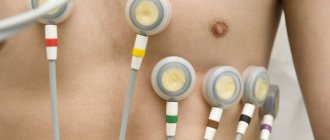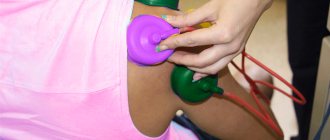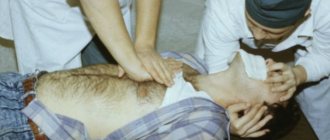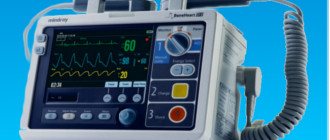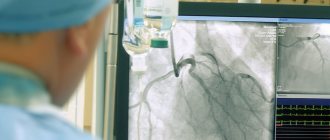Features of document preparation
In accordance with the production and technical purpose in worker training, the following can be distinguished:
- initial professional training of workers who are hired by the enterprise but do not have the appropriate education;
- retraining (retraining) of employees (the opportunity to gain new knowledge in an area in which they do not have the appropriate education, but they can work there because a place has become available; persons who want to change their profession due to such a need in production);
- increasing the qualification level (completing special courses, the main goal of which is improving professional, economic knowledge, skills and abilities, climbing the professional ladder).
In this article:
Video source: Power Machines
In addition, the welder must understand the equipment involved in joining metals in order to competently operate it, change consumables and maintain it. To do this, some welders are issued a separate certificate at the enterprise with access to installations operating with voltages up to 1000 V. All welders must know the instructions on labor protection, safety precautions, first aid methods for burns and electric shock.
One of the educational subjects for future welders is drawing. It is important to understand the cross-section of materials, their spatial position, and the locations of welding seams visible and invisible from the outside. Welders are taught the symbols of the types of welded joints.
The responsibilities of a welder are established at each enterprise individually, in accordance with the internal charter and the terms of the employment contract and contact. Most often they include:
- preparing parts for welding (cleaning edges, grinding, cleaning from rust and dirt);
- assembly of structures according to drawings and specified dimensions;
- welding of metals using designated methods;
- subsequent inspection and treatment of seams (cleaning of slag, grinding).
- construction (construction of columns using monolithic technology, welding of parapets, railings, ramps, mortgages, flights of stairs);
- automotive industry (assembly of housings, parts);
- car repair (service stations, auto repair shops, straightening, replacement of thresholds, etc.);
- heating installations (installation of boilers, circulation pumps, radiators);
- laying water and gas pipelines;
- production of metal doors, gates, gates.
There are enterprises where the welder is engaged only in welding, and all related processes are performed by mechanics and other workers. In other places, the welder is required to be more versatile, so the specialty may be called a welder-assembler, or a welder.
Where are welders in demand?
First-class welders will always find work in such companies as Gazprom, Tatneft, Transmash, Gazmash, etc. But, even if you are not a 6th category welder, there are always vacancies in the public utilities sector (water utilities, heating networks, housing and communal services , management companies). In addition, welders are regularly required for:
Without welders, it is impossible to create greenhouses, barbecues, gazebos, and sheds. Often, the services of a welder are necessary for landscape design. If you know how to cook well, you can open your own business providing the above services. The work can be done independently or with a partner. To start, you will need an MMA or MIG, TIG welding inverter, depending on the chosen direction. As well as protective equipment (mask, leggings, clothing, shoes) and tools (grinder, drill, sets of keys).
Implantation
Thanks to modern technology, the operation of implanting a cardiac pacemaker has become much easier. This procedure usually takes less than an hour. Typically, your doctor will apply local anesthesia to the area under your right collarbone. The electrode is then carefully inserted through a vein into the heart. Typically, the correct placement of the lead in the right atrium or ventricle is monitored by X-ray imaging. Only after a thorough check of the correct operation of the pacemaker is the electrode secured in the pacemaker. The pacemaker itself is implanted under the skin, in a small pocket below the right collarbone, and then the doctor places several stitches in the incision.
Necessary equipment for welding work
Welders
Welding inverters
Semi-automatic welding machines
Argon-arc devices
Consumables
Welding electrodes
Wire for semi-automatic machine
Tungsten electrodes
Welder personal protective equipment (PPE)
Welder masks
Gaiters, protective gloves
Other protection
Welding Accessories
Electrode holders
Ground terminals
Magnetic holders
Welding discharges
Upon completion of their studies at the college or courses, candidates pass theoretical and practical exams by a special commission. The welder is given a diploma indicating his profession and is assigned a certain rank. The level of complexity of the work performed, to which a specialist can be admitted, and the amount of wages depend on the rank.
Usually after college they graduate with the 3rd category, and those who are especially successful in mastering the profession - with the 4th. You can further increase your rank in production or in advanced training courses. There are 6 categories in total. Let's take a closer look at what each digit means in practice.
1st category
This rank is assigned to college students after the first year of study. Essentially, these are students who already know how to hold an electric arc and perform tack work, so they will be able to participate in the assembly of structures.
2nd category
An employee who has mastered his specialty, but not well enough, can be released from college with this rank. It is capable of welding in the lower and vertical positions, surfacing layers of metal for grooving, but is not allowed for connecting pipes through which liquids and steam flow. A second-class welder is able to weld a crater, a crack, and heat the metal before straightening. It is expected that he himself will be able to prepare cylinders for gas welding and set up an acetylene generator. Second-class welders are used in non-critical processes.
3rd category
The specialist must be able to weld vertical, corner, and T-seams using electric arc and gas welding, and hermetically connect pipes. A 3rd category welder understands welding equipment and is able to service and set it up himself. The employee is expected to be able to read blueprints. The welder is allowed to weld carbon steels and structures of medium complexity, but such a specialist will not be able to perform ceiling welding efficiently. When flame cutting, the welder must be able to maintain specified dimensions and apply preliminary markings.
Immediately after college, it is difficult to get a well-paid job with a 3rd category. Employers argue this by lack of practice. But after a couple of years of work, great prospects open up.
4-digit
The specialist is able to assemble parts and structures of medium complexity and conduct high-quality welding in all spatial positions. Can weld pipes hermetically at permanent joints (when it is impossible to rotate the pipe along its axis by 180 degrees to bring the lower part to the top). A 4th category welder can weld using electric, gas, or semi-automatic welding. Can connect cast iron, high-carbon steel, non-ferrous alloys, and is proficient in air arc gouging. Reading drawings of medium complexity is required here by default.
5th category
The specialist is able to weld low-carbon and high-carbon steels, alloy metals, non-ferrous metals in all spatial positions. Suitable for working with critical structures that will undergo high dynamic loads. Welds pipelines, inside of which there will subsequently be high pressure. Able to cut parts of complex shapes to precisely specified dimensions.
6th category
A welder of the highest category, who can do everything as the previous ones, is only able to work with experimental alloys, independently determining the welding method, current strength, type of gases and filler materials. The specialist knows how to cook under water, so he is allowed to repair pipelines and ships that operate in difficult specific conditions under high loads.
Period after implantation
Typically, the recovery period after surgery is quite short. You may have some pain around the pacemaker implantation site, in which case your doctor will prescribe a pain reliever. You may need some time to get used to your pacemaker. However, the feeling of discomfort will pass very soon. You should have your first examination with your doctor soon after surgery. He will check the electrical activity of your heart and the functioning of your pacemaker. If necessary, the doctor will adjust the parameters of the program according to which the pacemaker operates to suit your individual needs. On average, you should have regular checkups every six months. In general, you will be able to live a full life soon after implantation. You can continue to do your normal activities - work in the garden or around the house, drive a car. You can shower, bathe or swim. After consulting with your doctor, you can resume sports, favorite activities, and resume sexual activity.
Average salary for a welder
The salary level depends on the rank, length of service, turnover of the enterprise and location of the company. In Moscow, salaries are the highest:
Salaries vary across regions:
It happens that salary depends on the number of hours worked. The rank then affects the hourly rate. In the case of piecework wages, the grade affects the cost of the joint and operation, so welders with a higher level receive more. They are trusted only with critical connections, and the rest are performed by welders with less qualifications.
Tariff category
Tariff category, class, category are concepts of tariff regulation of labor that reflect the level of complexity of the work performed by the worker, the necessary qualifications (professional training, work experience, specialist skills).
They are installed in accordance with the specifics of work and in accordance with the norms of the ET KS. They can be awarded upon graduation from a vocational educational institution, and then based on the results of assessments by the tariff and qualification commission, which is created specifically for this purpose.
A tariff category without personal assignment is established for managers, technical performers, and specialists under the conditions of using the Unified Tariff Schedule.
In order for a qualification commission to be created, the employee must submit an application and representation from the head of the relevant workshop, department, or division.
How to obtain and increase the rank of welder
Many large enterprises have their own training center for retraining and advanced training. Here you can take courses and pass an exam before an internal qualification commission. Then the welder will be issued a certificate indicating the new category.
Small enterprises do not have such centers and will have to find a third-party one. In this case, please clarify whether you will be given a certificate with an increased rank or only a certificate of completion of advanced training. It is important to find an accredited center that issues certificates. After training and passing the exams, submit a copy of the document confirming the increase in rank to the personnel department and accounting department of your enterprise. Then you will be allowed to work of increased complexity and your salary will be increased.
NAKS
In addition to welder ranks, there is a NAKS certificate. This document is issued by the National Welding Control Agency. It is necessary for permission to work on structures of increased complexity, where particularly strong seams are required. They receive such a certificate at one of the accredited NAKS centers, which you can read about in the article - How to obtain NAKS certificates
Number classes
The digits in multi-digit numbers are divided from right to left into groups of three digits each. These groups are called classes . In each class, the numbers from right to left indicate the units, tens and hundreds of that class.
Class table:
Names of classes of multi-digit numbers from right to left:
- the first is the class of units,
- the second is the class of thousands,
- third - class of millions,
- fourth - class of billions,
- fifth - class of trillions,
- sixth - quadrillion class,
- seventh - class of quintillions,
- the eighth is the sextillion class.
To make it convenient to read the notation of a multi-digit number, a small space is left between the classes. For example, to read the number 125911723296, it is convenient to first highlight the classes in it:
- 125 911 723 296.
Now let’s read the number of units of each class from left to right:
- 125 billion 911 million 723 thousand 296.
When reading the class of units, there is no need to add the word “units” at the end.
Categories of welders
In addition to categories, welders differ in the categories of welding methods. Some types can be learned in college, others only at an enterprise where there is the appropriate equipment and conditions.
Press welding
A type of resistance welding that involves connecting the sides by squeezing them and passing current. Due to the increased resistance, the area is heated and the materials are mixed, forming a welding joint. The welder operates a machine with pliers, where he only regulates the location of the clamp and the duration of the current. In automatic machines, everything is done by the program and actuators, and the welder plays the role of an operator, setting the settings. High qualifications are not required here, since the equipment is responsible for many things.
Diffusion welding
Welding in a vacuum at elevated temperatures under low pressure. The process is carried out in special closed stands where a technical vacuum is formed. Again, the welder does not require high qualifications, since the machine performs many actions itself according to the entered settings.
Electron beam welding
It is used in the aviation industry, instrument making, and spacecraft manufacturing. Welding is carried out using the kinetic energy of electrons generated by an electron gun. The welding engineer must have a good understanding of the relationship between weld quality and endurance under future loads in order to adjust equipment accordingly. The process itself is completely automatic.
Thermite welding
The sides of the workpieces are heated and fused due to the combustion of powder - thermite. It is fed from a hopper into a refractory mold, having been previously melted. It is used when joining thick parts in hard-to-reach places (mainly repairing rails). It does not require high qualifications, since nothing depends on the welder’s manipulations.
Gas welding
It is carried out using a burner with acetylene-oxygen or propane-oxygen flame. The working gas is supplied from a cylinder or generator. The flame temperature is possible at 2800-3100 degrees. Welders engaged in gas welding are able to connect pipes, repair containers, and sheet structures in conditions where there is no access to electricity. The quality of the seam directly depends on the experience of the worker.
Electric welding
The most common method of electric arc welding. Divided into several types:
All of the above types of electric welding require the experience of a welder who, by manipulating the torch/holder, creates a high-quality seam.
Restoring the sinus rhythm of the heart is possible in 2 ways: electrical and drug cardioversion.
The increased risk of thromboembolism (stroke) after cardioversion is well known. In this regard, antithrombotic therapy before restoring heart rhythm in AF is considered mandatory. Antithrombotic preparation for restoring heart rhythm in AF.
The increased risk of thromboembolism (stroke) after cardioversion is well known. Stroke is the most devastating consequence of AF. The cause of thromboembolic complications in AF in 75% of cases is thrombosis of the left atrium, in particular, the left atrial appendage.
The mechanism of thrombus formation is associated with a decrease in blood flow velocity in the left atrium. In AF, there is no full atrial systole, the left atrial appendage empties passively, as a result of which the speed of blood flow in its cavity decreases. With a decrease in the LV ejection fraction, the blood flow in the left atrial appendage slows down even more, up to complete stasis (stagnation) of the blood, and the size of the left atrium increases, which in turn promotes thrombus formation.
In this regard, anticoagulation is considered mandatory before elective cardioversion if AF persists for more than 48 hours or its duration is unknown.
Based on the results of cohort studies, treatment with vitamin K antagonists, maintaining an optimal INR of 2.0-3.0, should be continued for at least 3 weeks before cardioversion and 4 weeks after cardioversion. In the presence of risk factors for stroke (stroke risk index CHA2DS2-VASc) or recurrent AF, treatment with vitamin K antagonists is carried out lifelong, even if sinus rhythm is maintained after cardioversion.
If an episode of AF lasts less than 48 hours, emergency cardioversion can be performed under cover of intravenous unfractionated heparin (UFH) followed by an infusion of UFH or subcutaneous low molecular weight heparin (LMWH). In patients with risk factors for stroke, treatment with oral anticoagulants is started after cardioversion and continued for life. UFH or LMWH is used until the therapeutic INR is achieved (2.0-3.0).
The mandatory 3-week anticoagulation may be reduced if transesophageal echocardiography does not reveal a thrombus in the left atrium or left atrial appendage. Cardioversion guided by transesophageal echocardiography may serve as an alternative to 3 weeks of anticoagulation before rhythm restoration, and also in cases where early cardioversion is necessary, anticoagulation is not possible (patient refusal or high risk of bleeding), or there is a high probability of thrombus in the left atrium or its appendage.
If transesophageal echocardiography does not reveal a thrombus in the left atrium, then UFH or LMWH is prescribed before cardioversion, the administration of which is continued until the target INR is achieved while taking oral anticoagulants.
If a thrombus is present in the left atrium or left atrial appendage, treat with a vitamin K antagonist (INR 2.0–3.0) and repeat transesophageal echocardiography. When the thrombus dissolves, cardioversion can be performed, after which lifelong therapy with oral anticoagulants is prescribed. If thrombus persists, rhythm restoration may be abandoned in favor of ventricular rate control, especially if AF symptoms are controlled given the high risk of thromboembolism with cardioversion.
Electrical cardioversion of AF
Electrical cardioversion - stopping an attack of arrhythmia with a defibrillator discharge synchronized with an ECG (with the least vulnerable phase of the electrical ventricular systole, usually 20-30 ms after the apex of the R wave). Electrical defibrillation and cardioversion are usually combined under the term electrical impulse therapy (EPT).
Indications for external EIT for AF. • Lack of effect and/or intolerance to antiarrhythmic drug therapy; • Progressive heart failure due to paroxysmal AF; • Acute signs of hemodynamic disorders, heart failure, peripheral circulatory disorders.
Contraindications. • Rare short-term paroxysms of AF; • Intoxication with cardiac glycosides; • AF in thyrotoxicosis before correction of thyroid hormone levels; • AF in patients with complete atrioventricular block.
Preparation for planned restoration of heart rhythm in AF. Antithrombotic preparation before cardioversion, at least 3 weeks!
General guidelines include: • Last meal the evening before surgery. • The area where the defibrillation plates are applied (chest) should be shaved. • In the morning, stop taking medications.
External EIT technique.
EIT is performed in the intensive care unit or the X-ray operating room. EIT is carried out in a room equipped with: • equipment for monitoring the vital functions of the body (ECG, measuring blood pressure, respiratory rate and blood oxygen saturation) and carrying out resuscitation measures (defibrillator, breathing apparatus, monitors); • a specialized pacemaker, in case of heart block development.
Before EIT, intravenous access is established, monitoring of vital functions (ECG, blood pressure measurements, respiratory rate and blood oxygen saturation) is established, and a sedative drug is administered within 30 minutes. To perform the procedure, you lie on your back. The anesthesiologist administers medications and the patient falls asleep.
With external EIT, 2 electrodes are applied to the surface of the chest, one electrode is placed to the right of the sternum under the collarbone, and the second - in the area of the apex of the heart, and the center should be located in the sixth - seventh intercostal space along the anterior axillary line. This position is important for the coverage of the entire muscle mass of the myocardium by the flow of electrons. Figure The electrodes are coated with electrically conductive gel, pressed tightly against the chest so that there is no air between their surface and the skin, and a discharge is produced. The heart rhythm should be restored.
With a two-phase discharge, start with 100 J, and if necessary, increase the strength of each subsequent discharge by 50 J. Single-phase discharge requires 2 times more energy, that is, start with 200 J, followed by an increase of 100 J until a maximum level of 360 J is reached. .
Defibrillators that generate a bipolar pulse have a number of advantages over defibrillators that generate a monophasic pulse, because The “ability” of the discharge to eliminate fibrillation depends on the total value (in amperes) of the first and second half-waves, and the possibility of the damaging effect of the discharge is associated only with the value of the first half-wave. After EIT, you are transferred to a ward and prescribed bed rest for several hours. If you feel hungry, ask your doctor when you can eat. Check with your doctor about when to restart taking your medications, especially if you are taking glucose-lowering medications. Observation in the hospital after surgery from one day. Most patients can be safely discharged from the hospital within 24-48 hours after EIT.
Complications of external EIT for AF. – Thromboembolism (stroke). If AF persists for more than 48 hours or its duration is unknown, it is extremely important to take antithrombotic drugs to maintain an INR of 2.0-3.0 for at least 3 weeks to prevent thromboembolism. – Skin burns occur due to poor contact of the electrodes with the skin.
Medical cardioversion of AF
Drug cardioversion – stopping an attack of arrhythmia by administering antiarrhythmic drugs.
Indications. – Treatment strategy to control and maintain sinus rhythm. – Preparation for planned restoration of heart rhythm in AF. – Antithrombotic preparation before cardioversion, at least 3 weeks!
Technique of drug cardioversion.
Drug cardioversion of AF is carried out in an intensive care unit equipped with equipment for monitoring vital body functions (ECG, blood pressure, respiratory rate and oxygen saturation measurements). To perform the procedure, you lie down in bed on your back.
After drug cardioversion, bed rest is prescribed for 1-2 hours. If you feel hungry, ask your doctor when you can eat. Check with your doctor about when to restart taking your medications, especially if you are taking glucose-lowering medications.
Complications of drug cardioversion of AF. – Thromboembolism (stroke). If AF persists for more than 48 hours or its duration is unknown, in order to prevent thromboembolism, taking antithrombotic drugs with maintaining an INR of 2.0-3.0 for at least 3 weeks is extremely important. – Arrhythmogenic effect of antiarrhythmic drugs.
Revishvili A. Sh. “Clinical cardiology: diagnosis and treatment”, 2011. edited by Bockeria L.A., Golukhova E.Z.
Advantages and disadvantages of the profession
Benefits of work
Disadvantages of the job
Among the advantages of working as a welder:
The specialty also has disadvantages:
- regularly have to breathe smoke and vapors of molten metal;
- vision is heavily strained;
- in the heat you have to work in a thick protective suit, which makes it even harder to endure such conditions;
- There is a danger of electric shock.
Stimulator operating life
The exact length of time your pacemaker battery lasts depends on the type of pacemaker, your health, lifestyle, and other factors. Typically, the duration of work is from 5 to 10 years. You can get more information about the type of pacemaker you have from your doctor. How is a pacemaker replaced?
It is generally a safe and simple procedure to replace your old pacemaker with a new one. During the process of replacing a pacemaker, the doctor monitors the electrodes. If they function flawlessly, the doctor only connects them to a new pacemaker.
